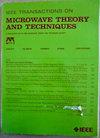Biodegradable and Easy-to-Make Broadband Tissue Phantoms Between 0.4 and 6 GHz Based on Phosphate Buffered Saline Solution
IF 4.1
1区 工程技术
Q2 ENGINEERING, ELECTRICAL & ELECTRONIC
IEEE Transactions on Microwave Theory and Techniques
Pub Date : 2024-10-08
DOI:10.1109/TMTT.2024.3468444
引用次数: 0
Abstract
Phosphate buffered saline (PBS) solution is a balanced salt solution employed for cell manipulation in cell culture experiments. In this work, PBS is used as base component for making liquid tissue-equivalent materials, also known as phantoms. For this purpose, the dielectric properties of PBS and other balanced salt solution and cell culture media used in cell culture experiments are measured at different temperatures (求助全文
约1分钟内获得全文
求助全文
来源期刊

IEEE Transactions on Microwave Theory and Techniques
工程技术-工程:电子与电气
CiteScore
8.60
自引率
18.60%
发文量
486
审稿时长
6 months
期刊介绍:
The IEEE Transactions on Microwave Theory and Techniques focuses on that part of engineering and theory associated with microwave/millimeter-wave components, devices, circuits, and systems involving the generation, modulation, demodulation, control, transmission, and detection of microwave signals. This includes scientific, technical, and industrial, activities. Microwave theory and techniques relates to electromagnetic waves usually in the frequency region between a few MHz and a THz; other spectral regions and wave types are included within the scope of the Society whenever basic microwave theory and techniques can yield useful results. Generally, this occurs in the theory of wave propagation in structures with dimensions comparable to a wavelength, and in the related techniques for analysis and design.
 求助内容:
求助内容: 应助结果提醒方式:
应助结果提醒方式:


